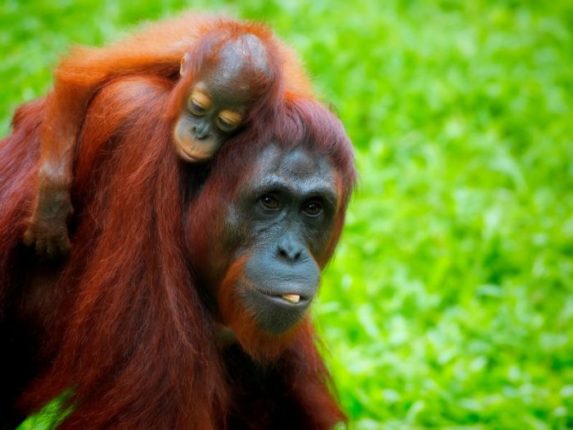
Today, 19 August, we celebrate the International Orangutan Day. We do it our way, without shouting and not guided by idealism or ideologies far from reality. We hope that this can be an opportunity to discuss with rationality the reasons that are threatening this animal. Unfortunately, today it will most likely be the usual opportunity to blame palm oil plantations.
The International Orangutan Day should be a time of reflection and cooperation. Yet every year it becomes a pretext to attack palm oil. Mainstream voices denigrate this ingredient and sustainable agriculture. They do not want to recognize that all the investments made in the agricultural sector to increase the sustainability practices are proving to be the best way for preserving biodiversity in the tropical forest.
For years now, several authoritative studies – the most recent WWF, Science Advances – confirm that it is through business investment and participation of citizens that the production chains become more sustainable. The boycott, on the contrary, suggested by various NGOs, does not favor sustainability. Why?
- They aim only at destroying everything, without any educational purpose towards the operators and cultivators;
- They do not advance any alternative proposals, but pushes producers to replace sustainable cultivation with others that are less so;
- They do not take into account the technological advances that the supply chain has achieved with great efforts.
FACTS: The WWF confirms that the population of orangutans in the Sabah forest has grown by more than 10% over the past 15 years. This has been possible thanks to the introduction of real “forest corridors”. They have increased the connectivity within the forest areas facilitating the passage of the orangutans between areas adjacent to the plantations to the purest forest.
Likewise, recent studies in Indonesia have confirmed that there are more wild orangutans from Sumatra than previously thought. The latest estimate puts the population at around 15,000, more than twice the previous figure, based on a survey of the nests where monkeys sleep. Furthermore, the local Government has established orangutan population and habitat goals for Sumatra of 13,710 orangutan and 205,327 km2 of protected orangutan habitat and for Kalimantan a goal of 45,590 orangutan and 134,823 km2 of protected orangutan habitat.
The orangutan is still at risk of extinction? Yes. But steps forward to protect its existence are made every day. Moving towards greater environmental sustainability requires strong collaboration between citizens, farmers, suppliers, producers and consumers. Fortunately, the efforts of the private sector have been combined with the sustainability policies implemented by the governments of Southeast Asia.
The palm oil supply chain was thus able to contribute to the creation of well-being for millions of people, to the reduction of poverty and inequalities, and guaranteed education and development. A sustainable supply chain, if well planned and well managed, can provide better income and employment, generating investments in innovative services and infrastructures.
A positive example of cooperation between producers, NGOs and local politics is the Orangutan Land Trust, an NGO that works precisely to promote the production of sustainable palm oil through the establishment of security corridors for orangutans and other species. The plantations thus become an opportunity to protect endangered animals.
Supporting the boycott does not contribute to improving the supply chain, nor does it promote sustainability. No chain of vegetable oils has reached the level of certification and sustainability that palm oil has achieved over the years at the level of scale. If we stopped planting palm trees, the millions of farmers in Southeast Asia would cultivate other crops that were much less sustainable, and therefore they would need more land and cut more trees. And who is on some of these trees? The orangutan.
The countries of South East Asia have learned from the mistakes of the past. In a few years they have achieved results in those that in many regions of the West have not been reached in millennia of human activity.
It is important to stick to the reality of the facts. The numbers provided clearly demonstrate how sustainable palm oil promotes biodiversity and sustainability in the forest of Southeast Asia. Sustainable palm oil – therefore jobs, prosperity, poverty reduction – and orangutans can cohabit.
Who today calls for more protection for this animal should celebrate palm plantations together with orangutan. If there were no palm trees there would be even less forest. And therefore less orangutans. Let’s all follow the path of sustainability and cooperation for biodiversity together.
